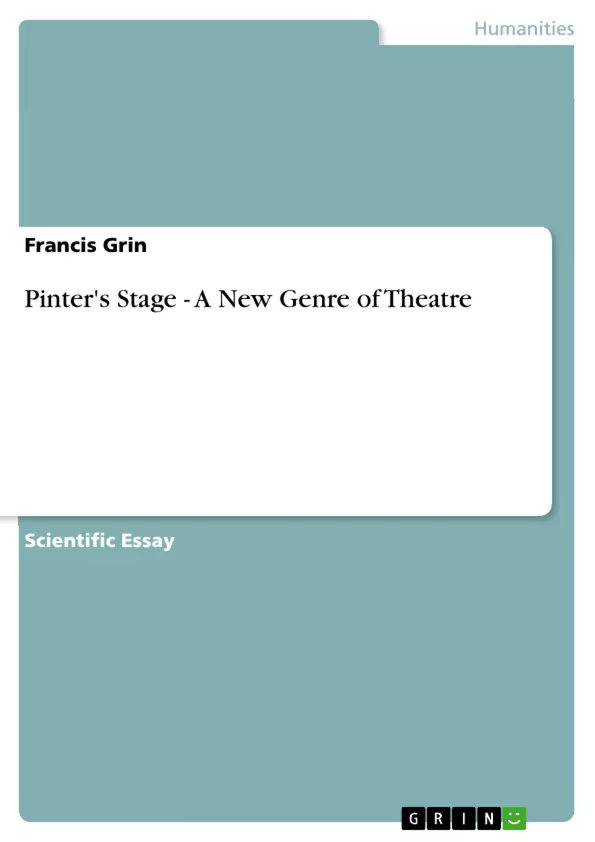When Harold Pinter’s plays first hit the British stage, they didn’t exactly receive a warm welcome. The 1958 Lyric Opera House premier of The Birthday Party was famously ripped to shreds, as the Daily Telegraph called it “one of those plays in which an author wallows in symbols and revels in obscurity.” (Darlington 1958) Its seemingly incomprehensible dialogue and action simply baffled most audience members into boredom. Yet today, Pinter’s plays are considered some of the most pivotal milestones in the movement of modern drama. Critics warmed up to Pinter as they stopped trying to read his plays through an already existent framework (realist, absurdist, etc.) and finally saw the texts for what they really were: revolutionary works of theatre. In a review regarding the 2005 Duchess Theatre
production of The Birthday Party, Michael Billington states “one problem in the 50s was that critics assumed Pinter was writing in the absurdist vein of Ionesco and NF Simpson. Now it is much easier to see the play for what it is: a rep thriller invented by a man who’s read Kaftka.” (Billington 2005) The point being, the major plays of Harold Pinter can neither be pushed into the categories of realist or absurdist theatre, they belong in a league of their own and need to be looked at through an independent framework.
Inhaltsverzeichnis (Table of Contents)
- Pinter's Stage: A New Genre of Theatre
- Pinter's Characters: Resisting Realism
- Realist Acting and its Limitations
- Ruth in The Homecoming: A Case Study
- Pinter's Settings: Manipulating Safety and Danger
- The Homecoming: Claustrophobia in a Roomy Space
- The Room: The Unattainable Home
- The Birthday Party: A Permeable Membrane
- Pinter's Dialogue: Evoking the Subjective
Zielsetzung und Themenschwerpunkte (Objectives and Key Themes)
This essay aims to analyze Harold Pinter's unique theatrical style, often termed "Pinteresque," by examining key aspects of his dramaturgy: characterization, setting, and dialogue. It argues that Pinter's work transcends traditional classifications of realist and absurdist theatre, creating a distinct form of hyper-realism.
- Pinter's defiance of realist character conventions
- The manipulation of setting to create a sense of unease and danger
- The use of realistic dialogue to evoke subjective experience and terror
- The exploration of themes of home, safety, and control
- The creation of a uniquely unsettling theatrical experience
Zusammenfassung der Kapitel (Chapter Summaries)
The introduction establishes Pinter's initial critical reception and the subsequent reevaluation of his work as revolutionary. The section on Pinter's characters contrasts his approach with the methods of Stanislavski and Strasberg, highlighting the "dissonances" in his characters' behavior as a key element of his hyper-realism. The analysis of The Homecoming's setting exemplifies how Pinter uses domestic spaces to create claustrophobia and power dynamics. Similarly, the discussion of The Room and The Birthday Party explores how Pinter subverts conventional notions of home and safety. Finally, the essay touches upon Pinter's use of realistic dialogue to create an unsettling atmosphere and engage the audience's subjective imagination.
Schlüsselwörter (Keywords)
Harold Pinter, Pinteresque, hyper-realism, realist theatre, absurdist theatre, characterization, setting, dialogue, The Birthday Party, The Room, The Homecoming, domestic space, safety, danger, violence, subjective experience, Stanislavski, Strasberg.
- Citation du texte
- Francis Grin (Auteur), 2008, Pinter's Stage - A New Genre of Theatre, Munich, GRIN Verlag, https://www.grin.com/document/119986



